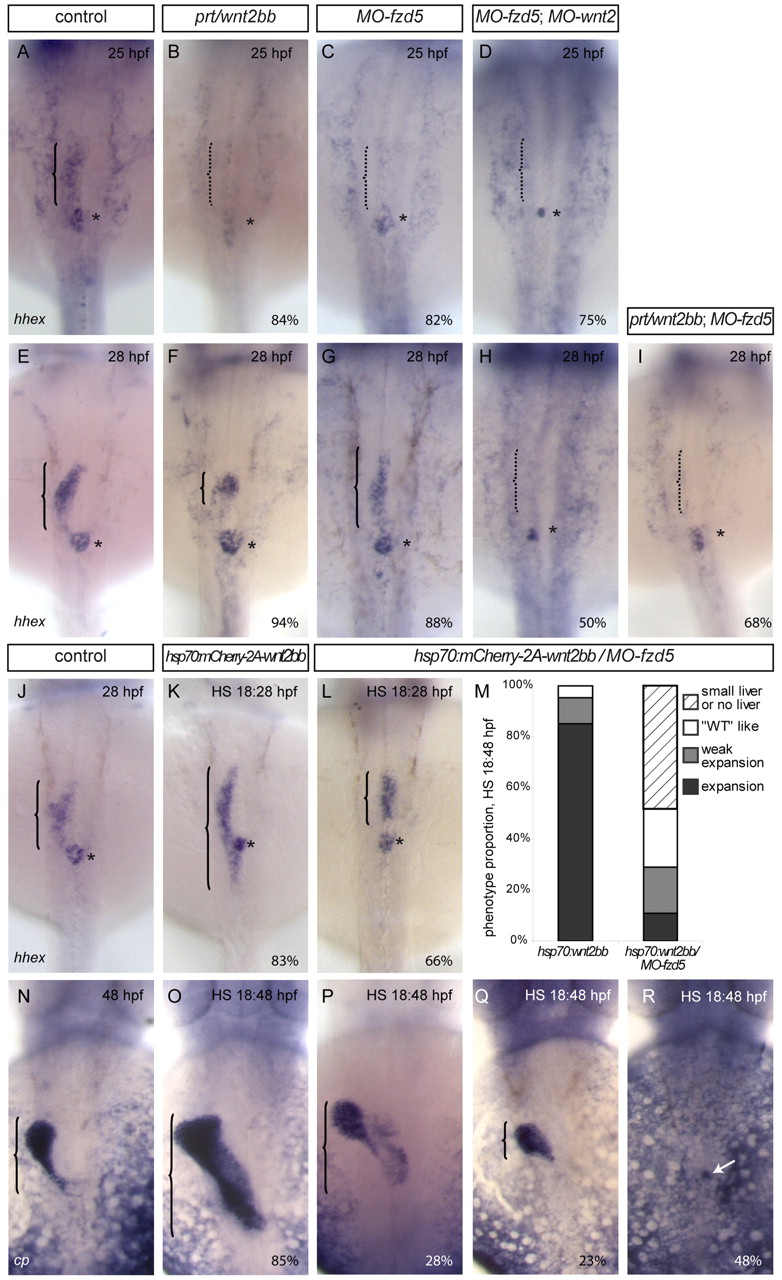Fig. 5
wnt2 and wnt2bb interact genetically with the receptor fzd5. (A-D) At 25 hpf, hhex-expressing liver progenitors (bracket) are absent in embryos lacking Wnt2bb (B), Fzd5 (C) or Fzd5 and Wnt2 (D), whereas the dorsal pancreas is unaffected (asterisk). (E-I) Hepatic hhex expression is reduced in prt/wnt2bb (F) and MO-fzd5 embryos (G) at 28 hpf. By contrast, in MO-wnt2;MO-fzd5 (H) or prt/wnt2bb;MO-fzd5 (I) embryos hepatoblasts fail to form. In a subset of MO-wnt2;MO-fzd5 embryos, pancreatic hhex expression is affected. (J-R) Embryos with excess wnt2bb show a significant posterior expansion of hepatic hhex or cp expression (K,O) compared with controls (J,N). In the absence of Fzd5, the majority of the embryos with excess wnt2bb exhibit no expansion of hepatic tissue (L,Q,R), whereas a subset of these embryos show a weak liver expansion (P). In the most severe cases, only single hepatoblasts form (arrow, R). (M) The distribution of liver phenotypes revealed by cp expression upon wnt2bb overexpression in wild-type or in MO-fzd5 embryos. (A-R) Dorsal views; anterior towards the top. The proportion of representative phenotype is indicated as a percentage.

